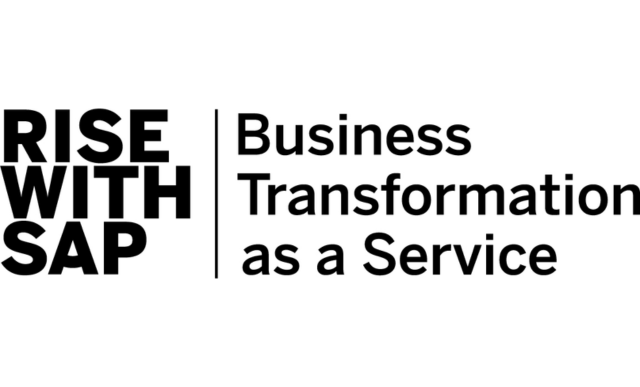SAP DevOps
Filter By
Browse By
- SAP Analytics and AI
- SAP Application Development and Integration
- All SAP Application Development and Integration
- SAP ABAP
- SAP ABAP Development Tools
- SAP ABAP Test Cockpit
- SAP API Management
- SAP BAPI
- SAP Basis
- SAP BRF
- SAP Business Application Studio
- SAP CMS
- SAP Design Studio
- SAP Development Tools
- SAP DevOps
- SAP EAI
- SAP EDI
- SAP Extension Suite
- SAP Fiori
- SAP Fiori Elements
- SAP Integration Suite
- SAP Low Code Application Development
- SAP Low Code Automation
- SAP Netweaver
- SAP Release Management
- SAP UI5
- SAP Web Application Server
- SAP Web IDE
- SAP Business Process Management
- SAP Center of Excellence
- SAP CIO
- SAP Customer Experience
- SAP Data and Data Management
- All SAP Data and Data Management
- SAP BW
- SAP BW/4HANA
- SAP Crystal Reporting
- SAP Data Archiving
- SAP Data Center
- SAP Data Governance
- SAP Data Integration
- SAP Data Migration
- SAP Data Quality
- SAP Data Services
- SAP Data Strategy
- SAP Data Visualization
- SAP Data Warehouse Cloud
- SAP DMS
- SAP Document Control
- SAP EIM
- SAP ETL
- SAP ETL Tools
- SAP HANA
- SAP HANA Administration
- SAP HANA Deployment Infrastructure
- SAP HANA Studio
- SAP Master Data
- SAP Master Data Governance
- SAP MDM
- SAP Enterprise Architect
- SAP Enterprise Asset Management
- SAP ERP
- SAP Finance
- All SAP Finance
- SAP Accounting
- SAP AR AP
- SAP Asset Accounting
- SAP Billing Systems
- SAP BPC
- SAP BRIM
- SAP Cash Management
- SAP Central Finance
- SAP Controlling
- SAP COPA
- SAP Cost Center Accounting
- SAP e-invoicing
- SAP FICO
- SAP Finance Automation
- SAP Financial Closing Cockpit
- SAP Financial Consolidation
- SAP Financial Planning
- SAP FX Risk
- SAP General Ledger
- SAP Global Tax Management
- SAP Hyperion
- SAP Order to Cash
- SAP Payment Processing
- SAP Profitability Analysis
- SAP Rebate Management
- SAP S/4HANA Finance
- SAP Universal Journal
- SAP Governance Risk and Compliance
- SAP Human Capital Management
- SAP Intelligent Technologies
- SAP Platform and Technology
- All SAP Platform and Technology
- SAP Business Technology Platform
- SAP Cloud Connector
- SAP Cloud Integration Platform
- SAP Cloud Migration
- SAP Cloud Platform
- SAP Cloud Providers
- SAP Cloud Strategy
- SAP Container Platform
- SAP Digital Asset Management
- SAP Digital Integration Hub
- SAP Digital Signature
- SAP HANA Enterprise Cloud
- SAP HEC
- SAP Hyperscalers
- SAP Infrastructure
- SAP Messaging
- SAP Smart Forms
- SAP Quality and Testing
- SAP Security
- SAP Spend Management
- SAP Supply Chain Management
- All SAP Supply Chain Management
- SAP APO
- SAP Asset Management
- SAP Business Network
- SAP Digital Manufacturing Cloud
- SAP Digital Twin
- SAP EWM
- SAP IBP
- SAP Inventory Management
- SAP Label Printing
- SAP Logistics
- SAP Manufacturing
- SAP Manufacturing Automation
- SAP MES
- SAP MII
- SAP MM
- SAP MRO
- SAP MRP
- SAP Order Management
- SAP Plant Maintenance
- SAP PLM
- SAP Production Planning
- SAP S&OP
- SAP SD
- SAP SPM
- SAP Supply Chain Planning
- SAP Track and Trace
- SAP Transportation Management
- SAP System Administration
What is SAP DevOps?
Today’s technology space is defined by rapid application rollouts, upgrades, and updates to meet growing business demand to be agile, innovative, and competitive. The landscape is also characterized by an interconnected network of SAP and non-SAP software that needs to function in tandem. Agile and DevOps approaches can transform software change management in a big way with software development teams delivering change faster and more frequently, along with automation enabling testing and deployment to keep pace with rapid development.
DevOps for SAP builds upon the principles of agile development by emphasizing collaboration, openness, and automation for delivering new features and services with speed and flexibility. Limited accountability, visibility, and satisfaction are the results of traditional IT development and delivery methods that often involve separate departments working independently. However, in DevOps for SAP, eliminating departmental barriers and creating a versatile team that consistently communicates with each other is the focus. This results in collaboration between Development, QA, Operations, and the business side, and fosters effective communication, a sense of ownership, and trust. The ultimate objective is to establish a smooth and uninterrupted workflow for integrating, delivering, deploying, and enhancing services.
SAPinsider’s report on Change Management and Testing in SAP found that while the traditional waterfall model dominates for SAP ERP Central Component (SAP ECC) or SAP Business Suite (37% vs. 28%), Agile and DevOps are starting to make inroads within SAP teams (43% plan to roll them out and 38% plan to roll out DevOps orchestration tools).
SAP teams, used to multi-year development projects followed by years of maintenance, must now adapt to this rapid, multi-modal development world. Many SAP teams struggle, leading to subpar application quality, suboptimal business value, security and compliance issues, business disruption, project delays, and budget overruns.
SAP teams need a suitable SAP-specific solution, with the capability to connect SAP to external continuous integration/continuous delivery (CI/CD) tools for non-SAP software. Several DevOps tools are available to accelerate workflows and enable CI/CD from ServiceNow, Microsoft Azure DevOps, and Rev-Trac; there is also open-source software such Jira, Jenkins, and GitLab.
These tools include change requirements management, source code, version control, and configuration management, among other things. Several of these tools can work across SAP and non-SAP and offer several features to enable DevOps.
- Service Management: ServiceNow enables SAP change tickets to be stored and managed with the tickets for other systems. It’s possible to create an integration between ServiceNow and the SAP development environment using an SAP DevOps solution. DevOps for SAP orchestrates and synchronizes approvals across multiple development tracks while updating status in ServiceNow as change progresses through the pipeline.
- Agile Backlog Management: An agile tool like Jira can enable the management of user stories as the business requirements change, with the SAP DevOps platform ensuring SAP development stays in sync with the current priorities in Jira, supporting reporting on status, Kanban boards, and traditional agile retrospective reporting such as burn down charts.
- Automated Testing: By integrating SAP development through a DevOps automation platform, it’s possible to keep SAP testing aligned with non-SAP testing. Testing automation tools from vendors such as Panaya ensure that testing results are verified across pipelines, preventing the deployment of change until everything passes testing requirements.
- Pipeline Integration: Many parts of the development cycle – approving code, release to quality assurance, and ultimately deployment to preproduction and production – are part of the integrated pipeline. With DevOps tools, there is full visibility of all software development through standard tools and greater efficiency resulting from standardized processes.
Why Adopt DevOps for SAP?
With customer expectations continuously rising as digital transformations pick up pace, businesses need to be agile and flexible enough to adapt to these changes or risk losing relevance. This is particularly true for traditional software Application Lifecycle Management (ALM) methods that are manual and lack transparency. DevOps allows us to update and enhance SAP systems and effectively respond to growing business demands. DevOps for SAP enables organizations to deliver new products, features, and services to their customers while minimizing risks. DevOps practices in the SAP development lifecycle can enable significant enhancements in software delivery holistically. Organizations can streamline process implementation for innovation and technical rehabilitation with reduced effort and minimized risk. With process automation in a DevOps framework, the need for manual intervention is eliminated and risk is reduced. Organizations can use automation to redirect valuable development resources towards addressing business challenges and innovation, and to seamlessly integrate SAP development into broader software delivery pipelines.
DevOps empowers IT to swiftly adapt to evolving market conditions and meet customer expectations. This ensures that IT remains highly responsive and delivers solutions that truly address the demands of the market and end users. With DevOps, organizations can free themselves from traditional SAP release cycles and transition to a Continuous Integration/Continuous Delivery (CI/CD) approach as deploying changes becomes easy and SAP systems gain enhanced agility and responsiveness.
Join SAPinsider to access opportunities for networking and engagement in the dynamic SAP ecosystem. As a member, you will have access to a wealth of valuable resources and content tailored to SAP technologies and best practices like the latest research reports, articles, webinars, and events that will keep you informed and ahead of the curve.SAPinsider membership grants you exclusive access to in-depth analyses, expert insights, and practical guidance that will empower you to navigate the ever-evolving SAP landscape with ease. SAPinsider membership will enable you to remain one step ahead and harness the latest trends, innovations, and strategies to drive your own powerful digital transformations, optimize your SAP investments, and unlock business success.
534 results
-

Introduction to Responsive Design in SAPUI5 and SAP Fiori
Published: 09/June/2014
Reading time: 21 mins
Ameya Pimpalgaonkar shows how to design responsive SAPUI5 or SAP Fiori applications. SAP Fiori uses the SAPUI5 framework and therefore all responsive design techniques used in SAPUI5 can also be used while developing custom SAP Fiori applications. Key Concept Responsive Design is an approach that enables you to develop Web sites or applications independent of...…
-

Choose the Appropriate SAP NetWeaver BI and mySAP ERP Landscape
Published: 01/November/2005
Reading time: 19 mins
Discover the deployment options for mySAP ERP 2004 and SAP NetWeaver Business Intelligence (SAP NetWeaver BI). Know your landscape choices and the sequence in which you should implement your software. Key Concept The most recent ERP release from SAP, mySAP ERP 2004, provides greater access for end users to the SAP NetWeaver platform’s features. SAP...…
-

Mastering SAP Announces Women in SAP Scholarship
Published: 07/March/2024
Reading time: 4 mins
Mastering SAP today announced the Mastering SAP Women in SAP Scholarship for women new to the SAP world. The scholarship program, valued at over $70,000, is designed to provide women* new to the SAP ecosystem with a learning and networking opportunity to kick-start their SAP career. Mastering SAP will provide 20 scholarships annually split across…
-
-

Quickly Develop SAPUI5 Applications with AppBuilder
Published: 09/October/2014
Reading time: 17 mins
Ameya Pimpalgaonkar shows how to use AppBuilder, which is a proof-of-concept tool that SAP has released to help developers adopt SAPUI5. Key Concept SAP AppBuilder is a browser-based tool for rapid SAPUI5 application development. It allows you to concentrate on application functionality rather than worrying about user interface (UI) design by providing UI drag-and-drop features....…
-

The Ultimate Guide to SAP RFC: Streamlining Communication and Ensuring Robust Security
Reading time: 3 mins
Securing and streamlining communication between SAP systems and external applications is critical for optimizing efficiency; this is where the SAP Remote Function Call (RFC) comes into play. RFC offers seamless integration and coherent communication between software systems, which today are indispensable components to an organization’s success in this rapidly changing digital world. This article will…
-

SAPPHIRE NOW Reactions
Published: 18/May/2016
Reading time: 2 mins
Audio pioneer Dolby Laboratories, which has been delivering audiophiles a superior sound and sight experience since the 1970s, decided in 2016 that it wanted an equally stringent level of quality assurance for its business process testing. The business sought a risk-based automated testing solution to reduce or eliminate regression test coverage gaps and lengthy testing…
-

Australia-based SAP Testing Specialist Tritusa Eyes Expansion to U.S. Market
Published: 20/November/2024
Reading time: 2 mins
Tritusa, an SAP testing specialist established in 2011, highlights the necessity of thorough SAP testing to ensure system reliability and efficiency, aiming to expand into the U.S. market while addressing misconceptions about testing costs to emphasise its value as a proactive investment against potential failures.
-
-

Maintaining High-Quality Standards in SAP S/4HANA Implementations
Published: 10/November/2024
Reading time: 3 mins
Implementing SAP S/4HANA successfully requires meticulous planning, risk-based testing, automation, comprehensive validation, performance optimisation, data integrity assurance, security checks, continuous feedback, thorough documentation, and active stakeholder involvement, as advised by Tritusa’s expert consulting team.
-

What’s New in mySAP CRM 2005
Published: 15/November/2005
Reading time: 14 mins
Discover the enhancements offered in mySAP CRM 2005, which SAP expects to release by the end of the year. Also find out what is involved with an upgrade to mySAP CRM 2005, whether you are new to SAP CRM or you use SAP CRM 2.x, SAP CRM 3.x, or SAP CRM 4.x. Key Concept mySAP...…
-

Jill Santos to head SAP Philippines
Published: 04/February/2025
Reading time: 2 mins
Jill Santos has been appointed as Managing Director of SAP Philippines, where she will lead the company’s efforts in cloud-based business transformation and AI adoption, succeeding Rudy Abrahams and reporting to Verena Siow, amidst SAP’s strong performance in the Asia Pacific region.
Become a Member
Unlimited access to thousands of resources for SAP-specific expertise that can only be found here.
Upcoming Events
Related Vendors
Your request has been successfully sent


